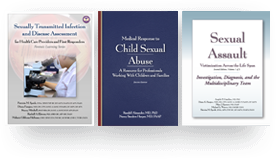The NFL Season and Domestic Violence
By: Megan Farmer
Overview
The NFL season has begun in the United States, with the official schedule running from September to January. For many families, football season is a time for get-togethers, camaraderie, and celebration as everyone roots for their favorite teams. However, big sporting events also bring intense emotions, usually heightened by alcohol consumption. It is a known fact that domestic violence rates noticeably increase in the time surrounding major events. This is especially true during holidays such as Christmas, Independence Day, and Thanksgiving. Unfortunately, the NFL season is among these. Additionally, repeated and heavy alcohol use are linked to male-to-female intimate partner violence (IPV).
For individuals in abusive relationships and victims of domestic violence (DV), this can be a particularly dangerous time. According to the 2016-2017 report on intimate partner violence by the National Intimate Partner and Sexual Violence Survey, around 40% of women and men in the United States have reported experiencing physical violence by an intimate partner at some point in their lifetime. Much of this violence occurs in the domestic space, especially when couples are living together.
Factors to Consider
Although sports viewership is a fun pastime that allows individuals to bond with others and form a community, there is often a–sometimes intense–emotional connection that forms for one’s local or favorite team/players. These emotional connections are harmless in and of themselves, but they can combine with other factors such as alcohol and mood disorders to create an environment in which a loss affects more than just the team.
In 2011, Card & Dahl published a study titled “Family violence and football: the effect of unexpected cues on violent behavior”, which looked at the correlation between at-home football viewership and DV reports. More specifically, Card & Dahl examined police reports involving domestic violence made on Sundays from 750 city and council agencies within the National Incident Based Report System. After cross-referencing these reports with the game schedules and results for NFL teams local to each city or state within the data set, the authors found that there was a statistically significant increase in DV reports when a local team suffered an “upset loss” (when a team who is expected to win loses by 4 or more points). DV incidents were also higher when the upset loss occurred in salient games (when the playing teams are in a traditional rivalry or one is in contention for the playoffs). The authors noted from the timing of the reports that the increase in violence typically occurred within a few hours after the loss, likely due to “transitionary emotional shocks”.
Conclusion
It is important to note that there is a correlation between the NFL season and increased rates of DV, but it is not a case of causation. Rather, there are factors introduced by fan viewership of major sports events that play into increasing rates of violence within the domestic space, such as heavier alcohol consumption2 and strong emotional reactions to team losses.
Communities and health care providers, keep in mind the individuals who are suffering from DV and stay vigilant to the signs that indicate that violence may be occurring or increasing. Although the thought of reporting violence or leaving an abusive relationship can be terrifying, there are resources available. If you or someone you know is experiencing domestic abuse, call or text the National Domestic Abuse Hotline at 800-799-7233.
On tips with dealing with an unexpected sports loss, read this blog.
References:
- Card D, Dahl GB. Family violence and football: the effect of unexpected emotional cues on violent behavior. Q J Econ. 2011;126(1):103-143. doi:10.1093/qje/qjr001
- Wilson IM, Graham K, Taft A. Alcohol interventions, alcohol policy and intimate partner violence: a systematic review. BMC Public Health. 2014;14:881. doi:10.1186/1471-2458-14-881
- Leemis R, Friar N, Khatiwada S, et al. The national intimate partner and sexual violence survey: 2016/2017 report on intimate partner violence. National Center for Injury Prevention and Control, Centers for Disease Control and Prevention. 2022. chrome-extension://efaidnbmnnnibpcajpcglclefindmkaj/https://www.cdc.gov/nisvs/documentation/NISVSReportonIPV_2022.pdf








